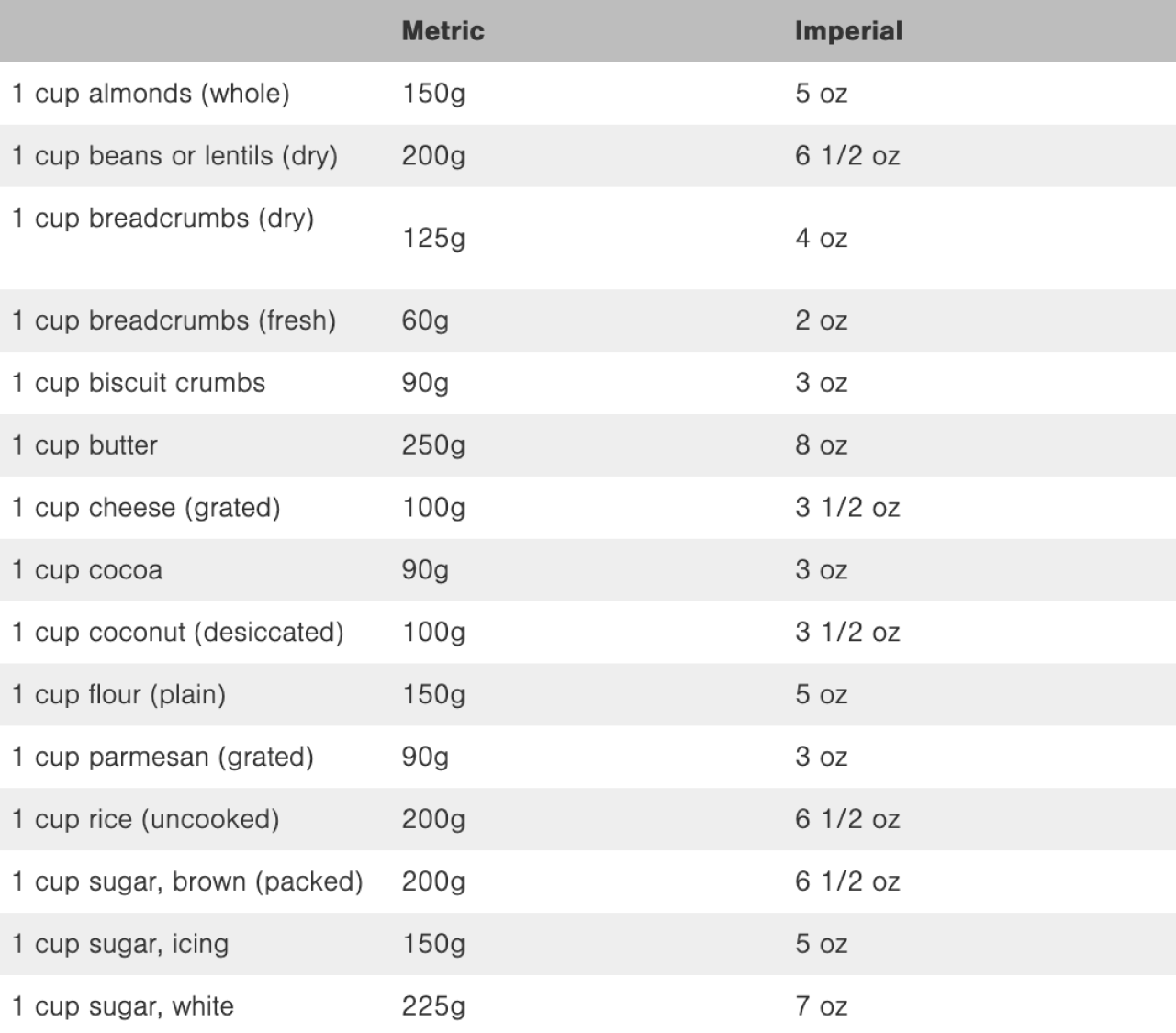Conversions
Some people prefer to weigh ingredients when cooking; others, like us, prefer to scoop ingredients with a cup. On this website and in the New Zealand and Australian editions of our books we usually use cup measurements (1 cup = 250ml) but when it’s helpful for you to know a metric weight, for example when it’s the size of a tin or tub, we have included that too. International editions of our books use the measurement system predominant in that country, but in case you prefer a different system we have supplied some handy conversion charts below.
Converting Weights
Where conversions don't match exactly, imperial figures have been rounded up or down.

Cup Weights
Even when measured in a standard 250ml (8fl oz) cup, different ingredients weigh different amounts. Here are some of those most commonly used in our recipes.

Liquid Measurements
Our recipes use the standard 1 tbsp = 3 tsp = 15ml measure common in NZ, the UK and the US. An Australian tablespoon is slightly larger (1 tbsp = 4 tsp = 20ml) so if you are using an Australian tablespoon you may wish to fill it only three-quarters full.

Oven Temperatures
Unless otherwise stated, our recipes have been tested using the fanbake (fan forced) function. If you use regular bake you will generally need to increase the temperature by 10°C and the cook time by 10-15 percent. Cooking times are a guide only.

Also
To help you cook in a more relaxed, free-range way, get used to judging common weights and amounts so you don’t need to measure them each time. For example, pour a teaspoon of salt onto your hand and remember the size and weight of it. Weigh a 25g handful of salad greens and remember what it looks like so you don’t have to weigh it again. If a recipe calls for 2cm dice, we measure the ingredient against the first joint of an index finger. If it calls for 1cm dice, we measure it against the width of an index finger. Once you develop your own cooking style you will instinctively know when and how to adapt recipes to suit your taste.

Some Common Ingredients



